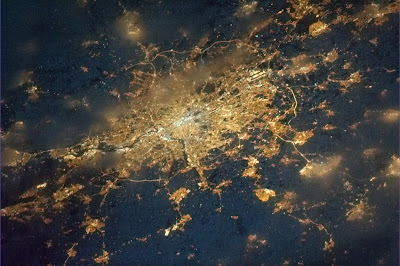But just as technology has seemingly usurped most aspects of human endeavour and experience - including the once dark night-time skies in the heavens above - the UK’s cross channel neighbour has, as it were, ‘seen the light’. Vive la France!
At the end of August, as its populous was returning to work after ‘les grandes vacances’, the whole country grew darker through the night as one of the world’s most comprehensive lighting ordinances came into effect.
Now, in the early hours of every morning between 1 am and 7 am, shop lights are being turned off and lights inside office buildings must be extinguished within an hour of workers leaving the premises.
Lighting on France’s building facades cannot be turned on before sunset and, over the next two years, new regulations restricting lighting on advertising hoardings will also take effect.
These rules are designed to eventually cut carbon dioxide emissions by 250,000 tons per year, saving the equivalent of the annual energy consumption of 750,000 households and slashing the country’s overall energy bill by 200 million Euros a year.
But, according to France’s Environment Ministry, no less a motivation is to ‘reduce the footprint of artificial lighting on the nocturnal environment’.
This is a powerful acknowledgement that excessive use of lighting is not only consuming too much energy but is endangering our health and the health of the ecosystems on which we rely.
Researchers are now focusing on the impacts of so-called ecological light pollution and warn that disrupting the natural patterns of light and dark - and thus the structures and functions of ecosystems - is having a profound impact far beyond what we realise.
It’s a global problem and is worsening by the month as countries like China, India and Brazil become increasingly affluent and urbanised.
Views of Earth at night show vast areas of North America, Europe, the Middle East, and Asia glowing with light. Only the world’s remotest regions - Siberia, the Tibetan plateau, the Sahara Desert, the Amazon, and the Australian outback remain cloaked in darkness.
Some countries, including the UK, have enacted limited regulations to reduce light pollution but in reality most nations and cities still do little to manage our excessive, almost compulsive, use of light.
The photographs below show the UK and London at night as seen by astronauts on the International Space Station (ISS). It serves as a poignant illustration of the point in question - namely that as both individuals and nations we are using far too much artificial light with little or no consideration for either cost, the environment or our own health.
As the autumn nights draw in, this is the first in a series of short Lighthouse Keeper essays looking at the impact of artificial light at night in our modern world. The title draws from Gordon Giltrap’s classic 1978 album ‘Fear of the Dark’ which was re-released in 2013 and is newly remastered from the original tapes, including eight extra tracks drawn from a series of singles released between 1978 and 1980. ‘Fear of the Dark’ , a Lighthouse Keeper 'top ten' album, saw Giltrap backed by a band of outstanding musicians: John G Perry (Bass), Rod Edwards (keyboards) and Simon Phillips (drums) and featured many outstanding tracks.
For more articles in this series search under 'artificial light' on the adjacent tag cloud.





